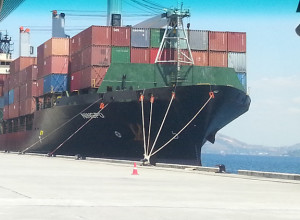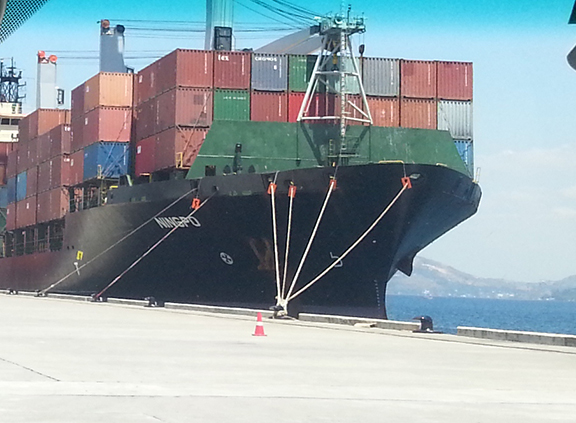 The Philippine government and private sector are working together to get more international shipping lines to call Subic port direct to reduce shippers’ costs and cut transit time.
The Philippine government and private sector are working together to get more international shipping lines to call Subic port direct to reduce shippers’ costs and cut transit time.
The Subic Bay Maritime Technical Working Group (TWG), composed of representatives from government agencies and the private sector, is identifying ports that could be directly linked to Subic, including Singapore, China, and Japan, Subic Bay Metropolitan Authority (SBMA) chairman Roberto Garcia told PortCalls in a text message.
The TWG was formed to act on outputs from the 2012 Subic Bay Maritime Conference.
Garcia, who was a speaker at the recent Northern Luzon Shipping Summit at Fontana Clark, said the group’s long-term plan is to build enough volume to attract direct calls to Subic so as to bring down costs and improve turnaround time.
He added that 15% to 20% of the 3 million containers handled at Manila ports yearly, or 450,000 TEUs, “originate or are shipped to Central and Northern Luzon”, and which could easily go through Subic port.
One carrier, an intra-Asia liner, is answering the Subic call by mounting a Xiamen-Manila-Subic-Japan-Xiamen service this month, meeting shippers’ need for China and Japan connections.
Wanted: More foreign carriers
About 30% of 250 Northern Luzon Shipping Summit participants, who were mostly importers and exporters from Central and Northern Luzon, indicated in an informal survey that they wanted additional carriers at Subic port.
Surveyed exporters said they send their cargoes mostly to the United States, parts of Europe, Australia, and Asia, particularly China, Japan, and Taiwan.
But some noted that it takes 10 to 12 days for their shipments shipped from Subic to get to Busan, Korea compared to only four or five days from Manila.
One trader emphasized the importance of speed to their business and said they transferred their shipments to Subic thinking they would reach their destination faster, only to find this was not the case.
Another importer said they were forced to use Manila despite higher trucking costs and the longer distance because of the faster transit time.
Regular Subic callers
While Subic port has two regular callers, APL and Wan Hai Lines, both connect to Kaohsiung only at this time, pointed out Daniel Ventanilla, general manager of NYK Line in the Philippines.
Ventanilla, one of the summit panelists, explained that emerging routes are determined by volume and demand, and noted that a “huge percentage” of import containers carried by shipping lines and most of their commitments are still for Manila.
This is why carriers servicing Subic have a subsequent call to Manila before or after and only connect to Kaohsiung from Subic. This means cargoes bound for Busan will have to be transshipped to Kaohsiung first before arriving at the Korean port if current Subic callers are to be used.
However, once additional carriers start connecting Subic directly to other key Asian ports, Ventanilla said transit time for the Northern Luzon port will be cut.
Ventanilla said NYK has been active in Subic “for the last three years,” and has kept its presence as a “container operator”, co-loading with regular Subic direct callers. It has yet to make its presence felt as a “ship operator” in Subic for container vessels.
NYK Line bulk and project vessels, on the other hand, have been calling other ports in Subic in the last few years.
As for regular Subic caller Wan Hai Lines, it has plans to mount a dedicated Subic call and is considering direct calls to Subic from Kaoshiung, no longer calling Manila first. “But we need to justify (this) first with the volume,” said sales manager Ted Arnold Bolla, who was also a panelist at the summit.
Asked how much volume would convince liners to call at Subic, Bolla said 1,000 TEUs might do it for Wan Hai.
Meanwhile, Subic Bay International Terminal Corp (SBITC), operator of Subic port and a unit of International Container Terminal Services, Inc (ICTSI), said the port is ready for additional callers and has “no capacity issues.”
SBITC officials said the port is currently acquiring cargo-handling equipment which includes rubber-tired gantries, reach stackers and prime movers. – Roumina Pablo





